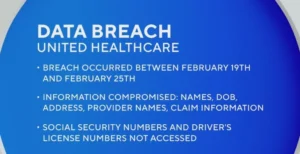Tesla Live Scam – The rise of YouTube scams involving fake Elon Musk live streams has become a significant concern. Cybercriminals are profiting from these fraudulent activities by hijacking YouTube accounts and creating fake videos promoting bogus cryptocurrency giveaways. In just one week, scammers have managed to make $243,000.
This article explores the Tesla Live Scam, how it works, warning signs to look out for, and customer experiences.
It also highlights the need for improved cybersecurity measures to combat fraud. Additionally, it addresses the legitimacy of these scams and offers tips on how to protect oneself from falling victim to such scams.
Table of Contents
What is the Tesla Live Scam?
The Tesla Live Scam involves fraudsters hijacking YouTube accounts and creating fake videos that promote bogus cryptocurrency giveaways, resulting in the scammers making $243,000 in a week while deceiving thousands of viewers.
This scam has had a significant impact on the cryptocurrency market, as victims are fooled into sending cryptocurrency to criminals based on the false promises made in these fake videos.
The role of social media platforms in combating scams like these has come under scrutiny, with YouTube being accused of not effectively tackling scam advertisements. This highlights the need for better measures to prevent fraud on the platform and calls for stricter regulations on scam content.
It also raises concerns about online security and the need for improved cybersecurity measures to protect users from falling victim to such scams.
How Does the Tesla Live Scam Work?
One method employed in the Tesla Live Scam involves fraudsters hijacking YouTube accounts and creating fake videos that promote bogus cryptocurrency giveaways.
These scammers change the name and picture of YouTube channels to make them look like official Tesla channels, confusing followers and frustrating content creators whose channels are hacked.
The fake videos are streamed by cybercriminals, attracting thousands of viewers who are tricked into believing they are watching a legitimate live stream. The scammers profit from these scams, making $243,000 in just one week.
YouTube has been accused of not effectively tackling these scam ads, leading to an increase in scams targeting cryptocurrency users.
To combat these scams, strategies such as reporting the channels and implementing stricter regulations on scam content are needed to protect users and prevent further fraud on the platform.
Red Flags: Warning Signs of YouTube Scams
Red flags to watch out for when encountering YouTube scams include suspicious cryptocurrency giveaways promoted through hijacked accounts and fake videos that mimic official Tesla channels.
To spot fake YouTube channels promoting scams, users should be vigilant and look for the following warning signs:
Inconsistent channel content: Scammers often change the name and picture of YouTube channels to mimic legitimate ones. Users should be cautious if the channel suddenly starts promoting cryptocurrency giveaways or other suspicious activities.
Poor grammar and spelling: Fake channels may display poor language skills in video titles, descriptions, and comments. This can be an indicator of fraudulent activity.
Lack of verification: Official Tesla channels are typically verified with a checkmark next to their name. Users should verify the authenticity of a channel before engaging with its content.
To report and flag suspicious YouTube videos, users can follow these steps:
Click on the three dots next to the video thumbnail and select ‘Report.’
Choose the appropriate reason for reporting, such as ‘Scams/fraud.’
Provide any additional details or evidence to support the report.
By remaining cautious and reporting suspicious content, users can help combat YouTube scams and protect themselves from falling victim to fraud.
Customer Reviews and Experiences
Customer reviews and experiences shed light on the prevalence and impact of fraudulent YouTube channels promoting cryptocurrency giveaways and the frustration felt by victims who have fallen for these scams.
Trust shattered: Many customers expressed their disappointment and anger at being deceived by these fake videos, causing them to lose trust in the platform and its ability to protect users from scams.
Financial loss: Victims who fell for these scams shared their experiences of losing significant amounts of money, often in the form of cryptocurrencies, to the fraudsters behind the fake channels.
Emotional distress: The emotional toll on victims was evident in their reviews, with feelings of frustration, regret, and betrayal being common themes. Many expressed a sense of helplessness in recovering their lost funds.
Call for action: Customers urged YouTube to take stronger measures to prevent these scams and protect its users. They emphasized the need for stricter regulations, improved scam prevention measures, and better customer support for those affected by these fraudulent activities.
Overall, customer feedback highlights the urgent need for YouTube to address and combat these scams effectively, ensuring a safer and more trustworthy platform for its users.
How to Protect Yourself from YouTube Scam?
To protect oneself from falling victim to fraudulent activities on YouTube, it is important to exercise caution, verify the authenticity of videos and channels, and refrain from sharing personal or financial information with unknown sources.
Common tactics used by scammers in YouTube scams include creating fake videos promoting bogus cryptocurrency giveaways, hijacking YouTube accounts and changing channel names and pictures, and making channels resemble official Tesla channels to confuse followers.
To secure your YouTube account from potential hackers, it is recommended to enable two-factor authentication for added security, use strong and unique passwords, regularly monitor your account activity and report any suspicious behavior to YouTube.
By being vigilant and taking these precautionary measures, users can minimize the risk of falling prey to YouTube scams and protect their personal and financial information from cybercriminals.
Conclusion
In conclusion, protecting oneself from YouTube scams, particularly those involving fake Elon Musk live streams, is crucial in the face of rising cybercriminal activity. The impact on victims is significant, with individuals losing substantial amounts of money due to fraudulent cryptocurrency giveaways and fake advertisements.
The lack of effective action by YouTube in addressing these scams has drawn criticism from both Elon Musk and the public. As a result, there is a growing demand for stricter regulations on scam content and increased accountability from YouTube.
Additionally, the rise in YouTube scams highlights the vulnerability of the online advertising industry to exploitation by cybercriminals. Legal actions have been taken against YouTube for its negligence in tackling scam ads, emphasizing the need for better measures to prevent fraud on the platform.
Improved cybersecurity measures are essential to safeguard individuals from falling victim to these scams and to protect the integrity of online advertising.
Frequently Asked Questions
How do fraudsters hijack YouTube accounts for the Elon Musk scam?
To prevent fraudsters from hijacking YouTube accounts, users can employ prevention strategies such as enabling two-factor authentication, using strong passwords and being cautious of suspicious links and messages. To report fake Elon Musk streams and other YouTube scams, users can utilize the reporting feature on the platform, providing details and evidence for investigation.
What steps do scammers take to make their fake videos resemble official Tesla channels?
Scammers take several steps to make their fake videos resemble official Tesla channels. They change the name and picture of YouTube channels to mimic authenticity, making it difficult for followers to distinguish hacked channels from genuine ones. This prevalence of YouTube scams targeting popular figures highlights the need for improved cybersecurity measures.
Can you provide examples of red flags or warning signs that viewers should look out for to identify YouTube scams?
Warning signs and red flags that viewers should look out for to identify YouTube scams include fake videos promoting cryptocurrency giveaways, suspicious channel names, and pictures, requests for cryptocurrency payments, and promises of unrealistic profits.
Have any victims of the Tesla Live Scam shared their experiences or reviews?
Victims of the Tesla Live Scam experience financial losses as they are deceived into sending cryptocurrency to scammers. This has led to an increase in scams targeting cryptocurrency users and frustration among victims. Measures like reporting channels and stricter regulations are being called for to prevent such scams. Viewers can protect themselves by being cautious of fake advertisements and verifying the authenticity of channels before engaging with them.
Is there any legitimacy to the Tesla Live Scam, or are all the cryptocurrency giveaways promoted in the videos fake?
There is no legitimacy to the Tesla Live Scam, as all the cryptocurrency giveaways promoted in the videos are fake. These scams have had a significant impact on the cryptocurrency market, leading to financial losses for victims and an increase in scams targeting cryptocurrency users.
Also Read
Deloitte Headhunters Scam – Recognizing Job Scams
August Cash 2023 Scam Exposed: Quick Cash Offers With Hidden Dangers
Ticket Facil Scam – Everything You Need to Know
Also Read
Kramer Newman Bottle Return Scam Exposed
Is Kroll Monitoring Legit or a Scam? Uncovering The Truth
$6400 Subsidy Is It Legit? Health Subsidy Scam Exposed
Also Read
Is Claoudfmt A Legit Investment Platform? Claoudfmt Review
Is Printerval Legit or a Scam? Printerval Reviews
Is Boohooman Legit or a Scam? Boohooman Reviews
Also Read
Is Lk-99 Legit or a Scam? Room-Temperature Superconductivity
Axs Ticket Reviews: Is Axs Tickets Legit or a Scam?
Is Quantum AI Legit or a Scam? Quantum AI Reviews
Also Read
Nzta Toll Scam: Collaborative Efforts To Combat Scammers
Canadapost.tracksorders.com Scam Explained- Phishing And Fraud



















































